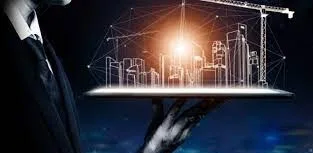In today’s modern era, when everything is running at lightning speed, the construction and building industry isn’t secluded. You might sometimes marvel at the fascinating skyscrapers or the perfectly lit homes. Ever wondered about the intense, deeply-engaged process that lies behind it? In reality, the construction domain is continually evolving and welcoming new electric innovations that play a crucial role in how our societies transform.
Electrical Innovations Overview
You probably spend a considerable amount of your time indoors, be it in buildings for commercial use or your comfortable homes. What you don’t realize is that there’s an invisible nerve system network running through these structures – the electrical systems. The Local Electrician and similar professionals are always engaged with innovative tech plumbing within the walls to transit electricity in its required forms.
Delving into broad aspects of what makes this magic work for you day in day out will allow you to comprehend better how deeply intertwined your life is with these constructive boons of electrical innovation. New-age solutions have been playing a pivotal role in marking up levels of efficient energy usage and sustainability while ensuring impeccable control over countless operational facets including safety.
Application in Building Industry
Modern-day builders focus on implementing energy-efficient methods during construction while ensuring safety provisions account for any potential hazards from electrical installations or malfunctions. Here’s where modern technological advancements come to the rescue.
Every aspect of building designing thrives on smart control systems capable of converting quick signals into actions like adjusting lighting as per room occupancy or even regulating temperatures according to your comfort needs. It doesn’t end here; such measures tremendously contribute towards saving energy too!
You got it right! All these were just glimpses into fine details of real-time application scenarios engaging extensively with electric innovation occupying spaces inside architectures across the world.
Reshaping Construction Protocols
Your understanding of architecture should not merely hinge on bricks-and-mortar perspectives anymore. Today’s changing times are proof that long-standing protocols need recasting vis-à-vis technology evolution – especially when it comes to electricity usage optimization inside buildings.
The construction industry now pays exceptional heed to integrating high-end security systems which are fully reliant on sophisticated electronics infrastructure, thus drastically reducing any chances of loopholes getting left unattended at planning stages itself.
Energy efficiency and conservation are further becoming more significant design considerations than ever before since they contribute extensively towards controlling global warming by managing carbon footprints optimally.
Thus, it’s justifiable saying that regulation norms from yesteryears for all building operations are consistently adapting contemporary steps leading to streamlined electricity usage while resonating with sustainable ethics simultaneously.
Innovative Solutions
Consider the practical implementation where advanced electric innovations significantly have an impact on structuring working protocols inside buildings, thereby contributing towards seamless service deliveries along with improved end-user experiences.
The conventional approach seems outdated today involving laborious manual efforts towards maintaining retrofitted lighting conditions space-by-space using traditional spotlights or luminaries whenever necessary.
However, considering adaptive fixtures like dimmable LED lights inclusive in designs beforehand has brought about remarkable changes while flaunting cost-effective features besides showcasing creative aesthetics adding value to purpose-served architectures.
Indeed, numerous organizations across sectors have experienced firsthand advantages from meticulous pre-planning observing integrated measures yielding greater feasibility par clientele expectations towards project outcomes.
Challenges and Potential Upsides
Adopting pioneering technologies means contending with a slew of challenges ranging right from sketching comprehensive drawings through execution phases until project completion successfully.
Potential challenges might include training the workforce to develop necessary skills and dealing with unexpected changes, all while maintaining a smooth balance of complexities and simplifications inherent in the various processes.
However, to look on the brighter side, accurately addressing these hurdles could lead to a redefinition of existing standards. Benefits such as improved productivity, decreased operating costs, and praise-worthy success stories validated by real-world applications are undisputable upsides.
These successes often culminate in creating eco-friendly paradigms that receive widespread acceptance and create significant positive impact.
Future Perspectives
Looking ahead, electrical innovations driving impacts globally gives an insight into futuristic technology disruptions round-the-corner effectuating versatile transformations dynamically suggesting promising signs revolutionizing construction panorama entirely.
Imagine elements like augmented and virtual realities merging with predictive analytics, aligning in advance with decision-making capabilities. This transformation will beneficially affect incumbents by offering new opportunities that reshape this vast segment by tremendously increasing potentials.
With these opportunities comes growth, both laterally and vertically, which mirrors the rational nature of innovation. This evolution continues on to represent next-generation characteristics while fostering symbiotic relationships that continually support growth.
In Summary
Electrical innovations are rapidly transforming the construction industry, driving change and showcasing adaptability. With technological shifts promising radical future development, we have exciting pathways waiting to revolutionize how we interact with built environments.
These advances go beyond new features; they focus on sustainability, shaping urban landscapes in an environmentally-respectful way. Embracing these electrical evolutions means joining a journey towards a sustainable architectural heritage that will define generations to come.

